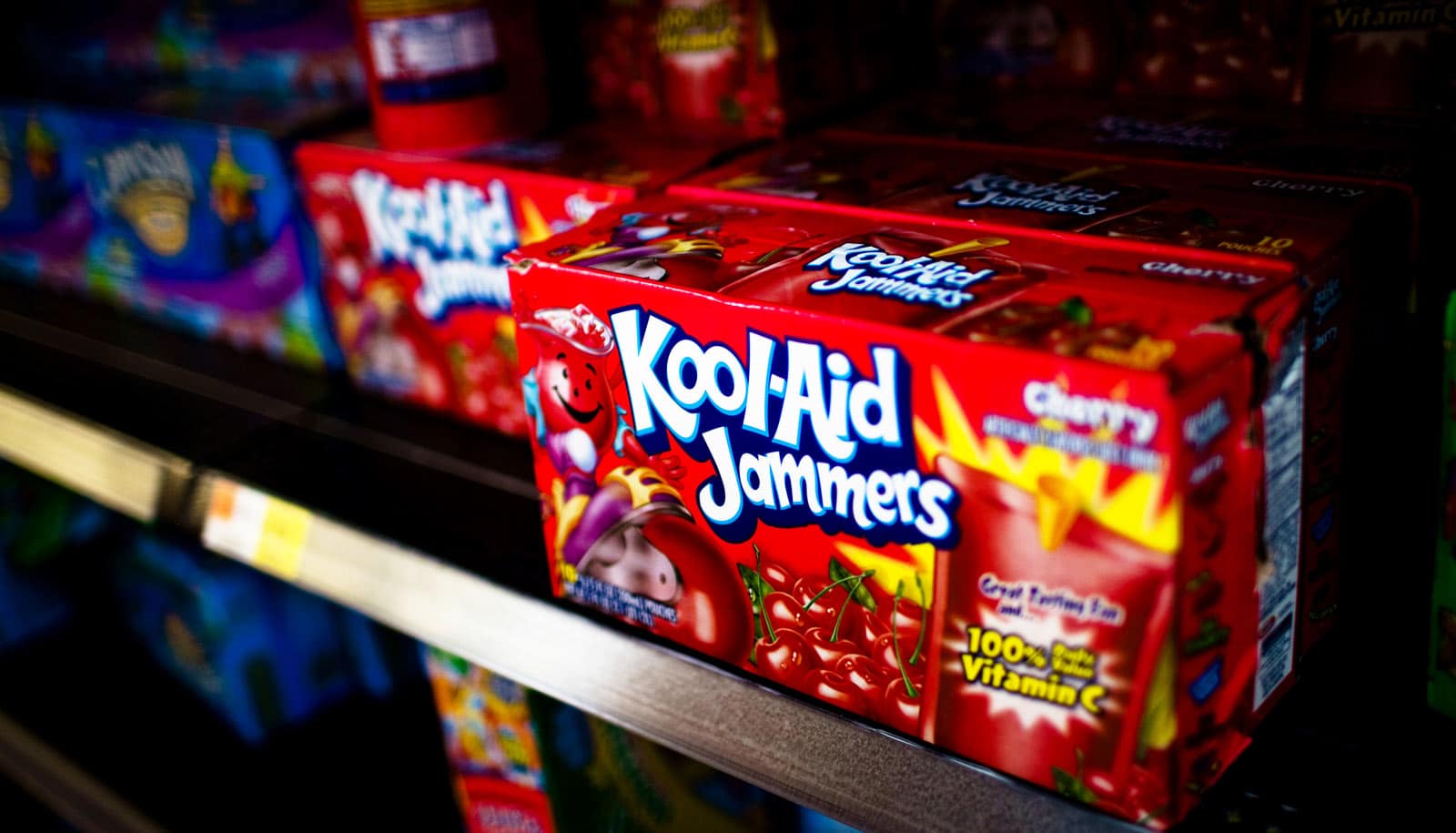The labels on drinks for kids don’t help adults tell what’s fruit juice and what’s sugary and artificially flavored, research finds.
Health and nutrition experts recommend that children don’t consume drinks with added sugars or nonnutritive sweeteners, yet drinks containing both represent a major portion of beverages that children consume.
While the FDA regulates drink labels, it permits a wide range of names, claims, and fruit images on packaging that do not necessarily reflect the drink’s ingredients. For example, more than 60% of drinks with added sugar include a positive nutrition claim about sweeteners, while more than a third of drinks with fruit pictured on the packaging do not include juice from any of the fruits shown.
The study, which appears in the American Journal of Public Health, recommends that the Food and Drug Administration (FDA) revise its labeling regulations to help consumers make healthier choices.
“Given the many different drinks marketed to children that contain or appear to contain juice, it is important that caregivers are able to differentiate among products and identify healthier options,” says Jennifer Pomeranz, assistant professor of public health policy and management at the New York University School of Global Public Health and the study’s lead author.
Is that fruit punch actually from fruit?
Pomeranz and her colleague Jennifer Harris, senior research advisor at the Rudd Center for Food Policy & Obesity at the University of Connecticut, examined the labels and ingredients of top-selling children’s juice drinks, including brands with at least $10 million in annual sales. To compare similar products across brands and categories, they focused on “fruit punch.”
The researchers identified 39 fruit punch flavored drinks that widely varied in the amount of juice they contained: seven contained 100% juice, 11 were diluted juices (juice and water), eight contained some juice (less than 100% but more than 2%) with added sugars or low-calorie sweeteners, eight had no or almost no juice (2% or less) and consisted of flavoring and sugar or low-calorie sweeteners, and five called themselves water but had similar ingredients as the drinks with little or no juice.
While the FDA requires products with 100% juice to include statements on the packaging related to added sweeteners, products with less than 100% juice are not required to have the same disclosures. Without this required transparency, the researchers observed many different nutrition claims on beverages:
- Of the products containing added sugars—which came from all categories except 100% juice and diluted juice—60% touted positive statements about sweeteners such as “no high fructose corn syrup.”
- Drinks containing stevia extract—a plant-derived sweetener—included claims such as “no artificial sweeteners” and “no sugar added.”
- Drinks across all categories had vitamin claims such as “100% vitamin C,” even though this was due to fortification and not from fruit juice.
- Nearly all drinks (97%) showed images of fruit on the front of the package, even if they didn’t contain juice from the fruits pictured—or any juice at all.
- The researchers found that even though labels depicted 19 different types of fruit, apple juice was the primary juice across products containing juice as an ingredient.
- While less than half (45%) of drinks with fruit images on the package actually included juice from the pictured fruits, more than a third (37%) did not contain juice from any of the fruits on the packaging.
- “We identified numerous labeling practices that obscure the true nature of drinks trying to pass as juice, blurring the distinction between drinks that are acceptable for children and those containing added sugar or sweeteners,” adds Pomeranz. “Nonetheless, these practices align with current FDA regulations, which allow the naming and use of fruit images that reflect the drink’s flavor, regardless of the product’s ingredients.”
What’s the solution?
The researchers recommend several changes to FDA regulations in order to help consumers make healthier choices, including standardizing the names of products (juice vs. waters vs. drinks with added sweeteners), differentiating between flavors and ingredients, and prominently disclosing added sweeteners on the front of products.
“The FDA should make it easier for consumers to tell what products are healthy for children—without having to carefully inspect the nutrition panel and decipher each ingredient on the back of the package,” says Pomeranz.
A grant from the Robert Wood Johnson Foundation supported the work.
Source: NYU

